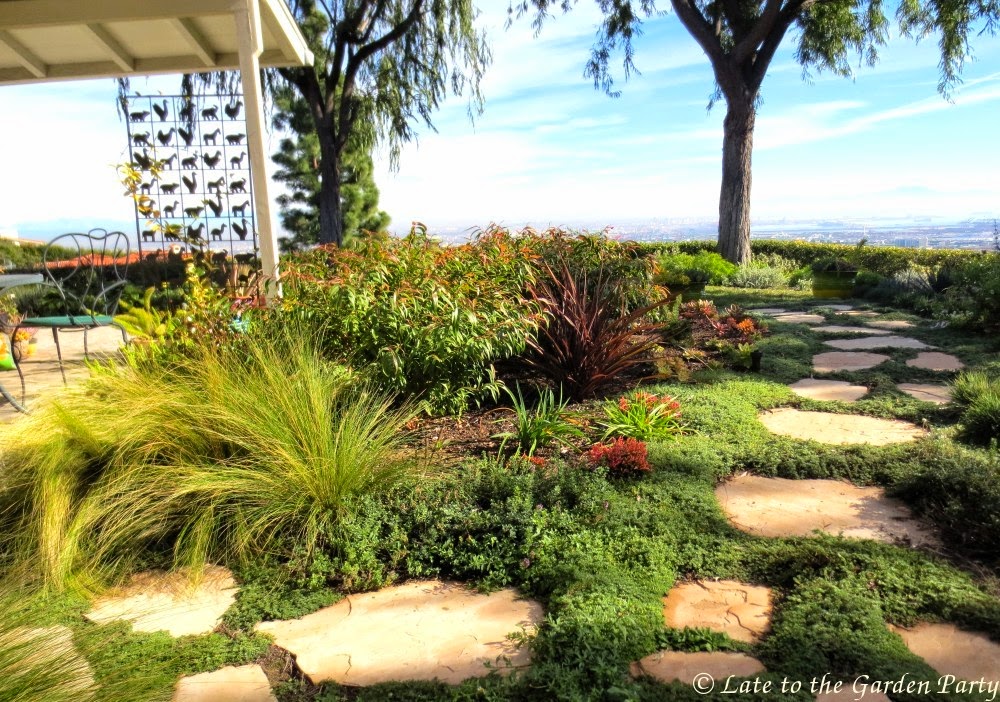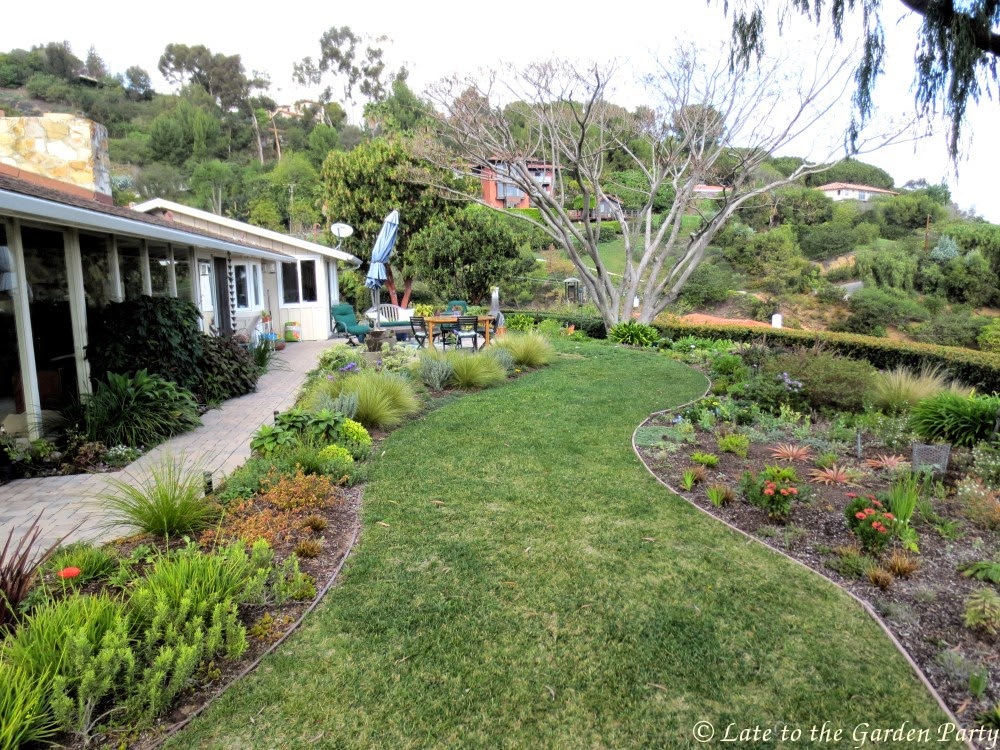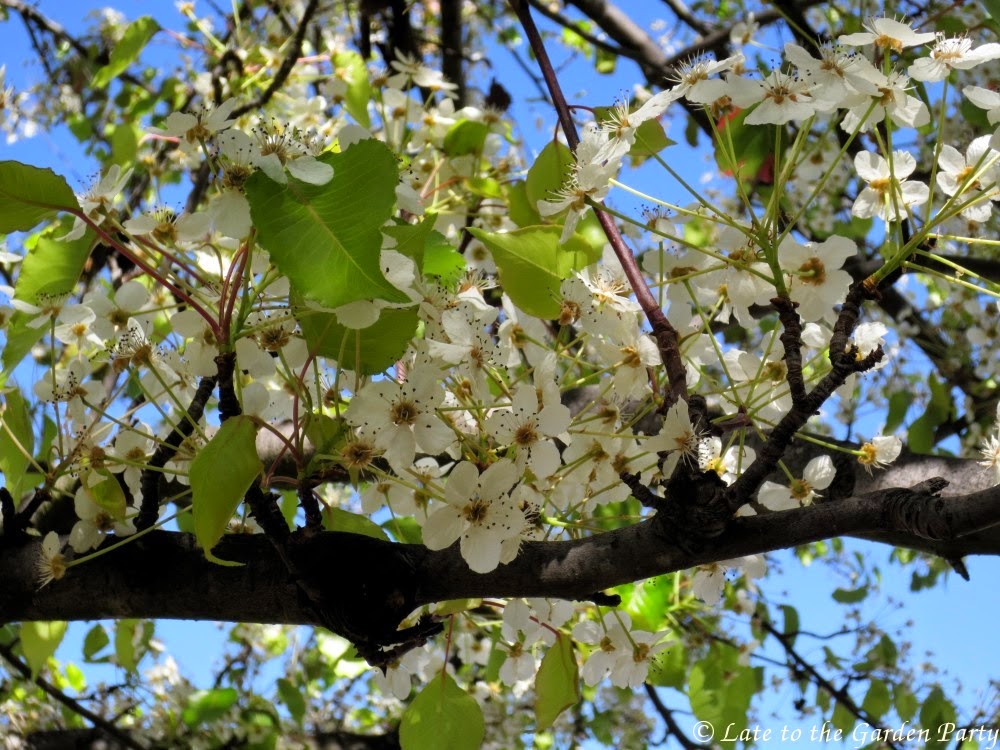In our area, many people value sky-line views over the trees and other foliage that surround their homes. This wasn't something I understood when my husband and I moved here 4 years ago. We learned it the hard way not along afterwards, however, and I'm getting another lesson on the subject now.
One of our neighbors caught me on the fly last weekend as I was finishing up a long afternoon of work in our front garden. She told me that our trees were interfering with her view and that we needed to do something to correct that. In 2012, this same neighbor raised objections to our 60+ foot
Eucalyptus tree, which we ultimately agreed to take out early in 2013 in the interest of neighborly goodwill.
![]() |
| The area occupied by the Eucalyptus before (left) and immediately after its removal |
After the
Eucalyptus was removed, the neighbor gave me before and after photos of her view and expressed happiness with the change. I thought all was well so her new complaint came as a surprise. Worse yet, standing in our driveway, she raised issues about virtually every tree in sight, even the small
Bauhinia x blakeana next to the house.
![]() |
| The Bauhinia rises just slightly above our roof-line |
Taken off-guard by the exchange, I responded that I was reluctant to cut back trees this year due to the drought and my desire to provide the plants below them as much shade as possible. She pushed harder, suggesting that many of our trees should either come out or be severely cropped. She pointed to what the neighbor across the street did to his
Cotinus as an example of "neighborly" behavior.
![]() |
| Once these trees leaf out, they'll look a lot better but not all trees respond well to this kind of treatment |
I got my back up at this point and said I'd look into getting my trees trimmed but I balked at taking out any trees or cutting them in the manner shown in the photo above. In response, she declared that she didn't want to take the matter to the city's View Restoration Commission but was prepared to do so if we couldn't resolve her concerns.
Our city has what has been described as the most rigorous
view preservation ordinance in the US. After talking to my neighbor, I read through the 30-page document describing the procedure for implementing the ordinance, which addresses foliage taller than 16 feet (or the foliage owner's roof-line, whichever is less), if such foliage significantly interferes with the 1989 view from the complainant's property. I talked to my husband, a few of our other neighbors, and some friends. I did not invite the complaining neighbor to walk the property with me so she could point out every tree she wanted removed or cut back. However, my husband and I did pull out the photographs she'd provided to us in 2013 and checked these against photos we took from the public trail that runs near her house.
![]() |
| These photos, taken by the complaining neighbor before and after our Eucalyptus tree was removed give us some indication of what her view may have looked like in 1989 and provide clues as to steps to "restore" that view (the marks in the photo on the right are her own, showing the space that was formerly occupied by the Eucalyptus) |
After shedding some tears, I've told my husband I'm willing to remove one of the 2
Agonis flexuosa in the backyard border. The second
Agonis in that border, the healthier of the 2, sat behind the former
Eucalyptus so I believe it's protected under the terms of the ordinance as that same area was obstructed when the Eucalyptus was in place.
![]() |
| Under the current plan, the tree on the left will go but the one on the right will be retained |
In addition, we're going to thin our other 6
Agonis and reduce the crowns, but only so far as the reductions cause no material damage to the health and integrity of the trees. We'll also cut back
2 Arbutus 'Marina' and our
Magnolia.
This morning, I walked through the garden with representatives of 2 different tree services to obtain bids on the work. I want to get it scheduled as soon as possible as winter, such as it is here, is clearly
coming to an end. With the Santa Ana winds blowing, our temperatures are expected to soar to 90F (32C) this week. I'll need to dig up the plants surrounding the tree slated for removal to minimize collateral damage and I expect a lot of additional work will be required to restore the surrounding area after-the fact, as was the case when the
Eucalyptus was removed.
I haven't said anything to the complaining neighbor yet. I'll let her know our plans when the work is scheduled. If she isn't satisfied, then we'll deal with the View Restoration Commission if and when the time comes - and let the neighbor pay the cost of any further foliage removal and site restoration of our property, as provided by the ordinance.
All material
© 2012-2015 by Kris Peterson for Late to the Garden Party


















































































































































































































